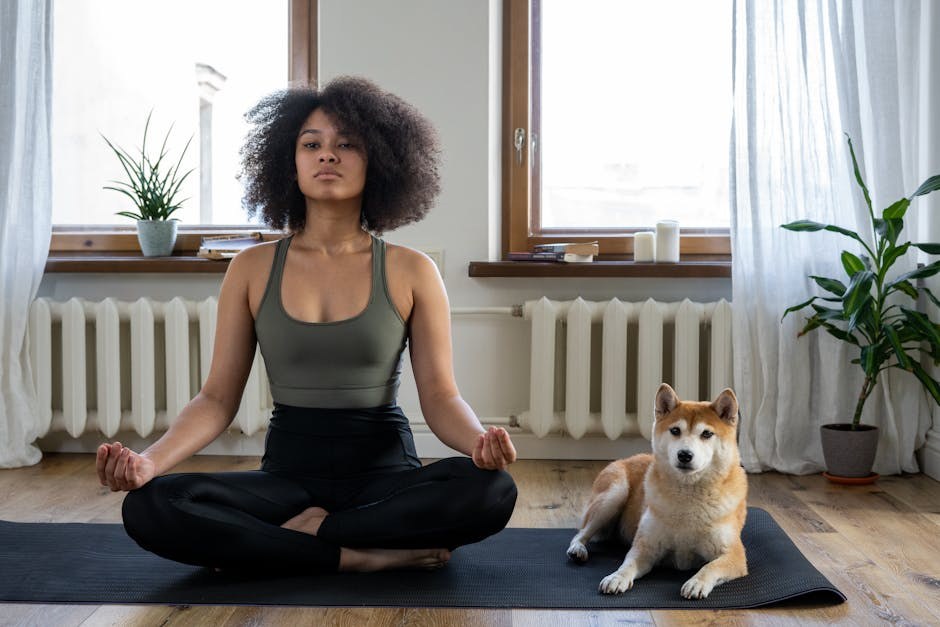Curiosity often begins with a simple question – what draws someone toward transforming themselves into a living, stylized figure? In some corners of consensual adult play, people explore a practice known as dollification, a blend of aesthetic transformation, role-play, and erotic charge. This article offers a clear, beginner-friendly look at how participants think about appearance, behavior, and partnership dynamics, as well as the different styles that flourish within this niche community. Rather than chasing shock value, it focuses on how people frame the experience, how roles are negotiated, and how the theme of becoming a “living doll” shows up in practical ways.
Defining the practice
At its simplest, dollification refers to a chosen process of becoming doll-like in body language, styling, and mindset. People who pursue dollification often speak of shifting into a role where they embody a polished or stylized figure – a person who looks and behaves like a doll, and who may be “displayed,” posed, or guided by a partner. While mainstream culture associates dolls with childhood toys, dollification is an adult exploration that repurposes those motifs into a consensual, intimate context. The draw is not merely to resemble a doll, but to inhabit the idea of one – a curated image, a composed presence, and a ritualized way of interacting.
Participants frequently use a two-part structure when describing the roles: an “owner” and a “doll.” This framing borrows from dominant/submissive dynamics and emphasizes agreed boundaries, presentation, and care. Importantly, not every person who enjoys being submissive gravitates toward dollification – the appeal is specific. The look, the stillness, the intentional object-like comportment are the defining threads that set it apart from broader role-play traditions.

How desire is framed
People sometimes describe dollification as a fetish – an erotic focus on particular objects, materials, or non-genital attributes that act as reliable pathways to arousal. In dollification, the focus converges on the doll motif itself: the polished surfaces, the idealized silhouette, the quiet or posed body, the sense of being arranged. For some, the fantasy remains purely imaginative – they envision scenes that revolve around dolls, figurines, or human partners styled as dolls. For others, the experience involves tangible transformation, from wardrobe and makeup to posture coaching and practiced stillness.
It helps to note that “liking dolls” in a casual, nostalgic sense is different from dollification. Dollification is specifically about the erotic energy that gathers around the doll persona – a deliberate change in vibe and choreography. It asks for shared understanding between partners and an appreciation of the visual and behavioral grammar that makes the scene feel convincing.
Mindset and the “doll” persona
What sort of inner posture supports this kind of play? Many people who enjoy becoming a “doll” are attracted to object-like serenity – the poise, the composure, the minimal movement. They may take pleasure in ceding initiative to a trusted partner, allowing themselves to be arranged, admired, and guided. This is not about erasing agency. Consent is active, continuing, and explicit – the paradox is that a person’s agency is used to create the appearance of passivity. The calm exterior becomes part of the fantasy, while real-world negotiations and boundaries remain firmly in place.

Within dollification, the mental shift can be as important as the outfit. People practice a particular gaze, a softened facial expression, or a refined, mannequin-like stillness. They may cultivate a voice that is gentle or-at times-quiet, and they often embrace repetitive, elegant gestures that echo the precision of figurines or display models.
Look, materials, and silhouette
Because the visual dimension is central, wardrobe plays a major role in dollification. Participants might choose sharply tailored dresses or skirts, thigh-high stockings, or ensemble pieces that emphasize a cinched waist and an exaggerated hourglass. Others lean toward latex, vinyl, rubberized layers, or glossy surfaces that reflect light like a toy on a shelf. Stiletto heels, corsetry, and sculpting undergarments can amplify the doll-like outline, while makeup techniques create flawless skin, defined lips, and symmetrical features that read as “crafted” rather than casual.
Hair styling varies widely. Some people prefer elaborate wigs to match a specific archetype; others go the opposite way, shaving their head to enhance the sense of being “manufactured,” then adding interchangeable looks with hairpieces. In some cases, body-shaping strategies are used to build a more striking silhouette. The key principle persists across all these choices: each decision supports the persona. Dollification is the thread that ties the styling, presentation, and behavior into a cohesive role.

Roles, care, and the owner-doll dynamic
In this scene, the “owner” is the partner who arranges and showcases the doll persona. They might set poses, adjust wardrobe, guide movement, or orchestrate the timing of stillness and display. The rhythm can resemble a gallery – the owner attends to details, while the doll provides the composed centerpiece. This relationship is not a blank check; it runs on clearly discussed limits, signals, and aftercare. People often agree on signals for discomfort or for pausing the scene altogether. These arrangements ensure that the composed quiet of the doll is built on trust rather than pressure.
Crucially, the owner role is not interchangeable with general dominance. Dollification narrows the lens. The partner must appreciate aesthetics, patience, and the slow craft of presentation. Someone who enjoys fast-paced improvisation might find the sustained stillness or meticulous grooming less compelling. By contrast, those who love theatrical detail often flourish here – dollification rewards attentiveness.
Presence, voice, and performance
How does the scene play out moment to moment? Many dolls adopt a measured, deliberate cadence. They may speak less during the scene – an effect that heightens the feeling of display – or choose simple, formulaic phrases that reinforce the persona. A quiet voice does not mean voicelessness. Before and between scenes, dolls describe preferences with clarity, negotiate boundaries, and keep consent active. The silence, when it appears, is a selected ingredient rather than a rule forced from outside.
Some dolls practice staying motionless for extended periods. Others emphasize slow, graceful movements that recall ball-jointed figures or figurines on a music box. The result is a tableau that carries its own kind of tension – the viewer’s awareness of a living person behind the composed exterior. That gentle friction between animation and display sits at the heart of dollification’s appeal.
Online spaces and virtual exploration
Not all experiences happen in person. Many people experiment with dollification in virtual realms, using avatars that capture the glossy finishes and stylized proportions associated with the theme. Digital spaces allow for trial and error – a low-stakes way to sketch out looks, poses, and mannerisms. They also help people discover language for what they enjoy, and to connect with others who understand the aesthetic without pressure to perform on a particular timeline.
Who participates
Dollification is not limited by gender. While popular imagery often spotlights hyper-feminine styles, the practice is open to anyone who resonates with the doll motif. Some participants echo a classic fashion-doll silhouette; others reinterpret action figures, mannequins, or futuristic androids. The unifying factor is the intentional transformation – the way a person curates their surface, movement, and mood to read as “crafted.”
Symbolism: why dolls?
Dolls occupy a peculiar place in the imagination – they blur the line between animate and inanimate, familiar and uncanny. Their faces are readable yet fixed; their bodies are designed to be posed. For people drawn to dollification, this mix is the spark. It creates a contained, stable world where aesthetic order and ritualized attention are front and center. The symbolism helps participants step into a heightened frame, a realm where roles are artfully simplified and the visual narrative does much of the talking.
Ways the theme shows up
Within the broad umbrella of dollification, people orbit around distinctive sub-styles. These are not rigid categories so much as creative templates. Individuals blend elements, borrow motifs, and invent personal twists that fit their tastes and comfort levels. Below are common interpretations you’ll encounter and the flavors they bring to the scene.
Ragdoll motifs. This look favors freckles drawn like stitches, heart-shaped or tiny “kewpie” lips, and sometimes yarn-like wigs to evoke a soft-play aesthetic. The performance emphasizes looseness – a body that goes slack when arranged, with limbs that settle rather than assert. Owners might reposition the ragdoll gently, highlighting the contrast between pliable posture and careful decoration.
Ball-jointed and poseable styles. Inspired by collectible figures, this approach centers on precision. The doll holds exacting postures – on pointe like a ballerina, or in angular, action-figure stances. Scenes often include holding poses for longer stretches, a test of focus and stillness. The drama comes from exact lines and the visual click of each “joint” into place, an ideal match for people who savor structured presentation within dollification.
Classic fashion-doll aesthetics. Think sculpted hair, a nipped waist, glossy lips, and coordinated outfits in bold silhouettes. Some participants work toward a smooth, almost airbrushed finish through wardrobe and makeup. Others intensify curves with carefully chosen garments to achieve the iconic outline. The performance accent is elegance – a steady smile, a composed gaze, and measured turns that show the outfit like a runway spin slowed to a dreamy pace.
Rubber and latex figures. Here, gleaming surfaces take center stage. Full-body latex or coordinated latex pieces create that unmistakable sheen under lights. The tactile sensation and the visual impact combine to reinforce the crafted, manufactured feel. Breathing, movement, and temperature management are carefully planned – preparation and pacing are part of the ritual, aligning with the methodical spirit of dollification.
Pet-inspired doll play. Some scenes mix feline or canine accents – ears, tails, or makeup – with a doll-like stillness. The result is more stylized than literal. The aim is to suggest a character that sits between animal role-play and display model, maintaining the clean lines and composed presence that make the doll persona recognizable.
Android or AI façades. This branch leans into sci-fi: a cool, pre-programmed poise; a voice that sounds learned, as if lines were uploaded; a readiness to “activate” on cue. The charm lies in the contrast between a human body and a deliberately artificial affect. The owner crafts scenes like software demos – an aesthetic that dovetails neatly with the choreography of dollification.
Communication and boundaries
Because the presentation may involve quietness or prolonged stillness, strong communication is essential. People decide how to pause a scene – some prefer simple spoken signals, others use agreed hand movements. Discussions before and after scenes cover comfort, wardrobe, duration, and any limits around touch or exposure. These conversations are not an afterthought; they are the platform that lets the polished exterior read as chosen and safe. In practice, the calm a viewer sees is supported by robust check-ins, shared language, and aftercare that brings everyone back to everyday pace.
Finding a fit
While images of dollification circulate widely, the active community is smaller than large umbrella scenes like BDSM. That can make partnering more gradual. People often start by refining self-presentation – learning makeup, practicing poses, and experimenting with outfits – before seeking a counterpart who enjoys the display-and-care dynamic. Patience pays off here. The match is as much about shared aesthetics as it is about complementary roles. When both partners appreciate the slow, deliberate craft of this style, the experience feels coherent.
Diversity within a narrow theme
It’s tempting to imagine that dollification produces a single look or attitude. In practice, it is surprisingly varied. Some dolls exude soft sweetness; others radiate high-gloss glamour or futuristic cool. Many people blend additional interests – corsetry, zentai suits, or performance traditions – into their scenes. These combinations don’t dilute the core. Instead, they reveal how dollification works as an organizing idea – a through-line that keeps the intent steady even as the styling shifts.
Developing the persona
New participants often focus on three pillars: styling, stillness, and story. Styling covers wardrobe, hair, and makeup – the surfaces that signal “crafted.” Stillness teaches the body how to settle into poses, how to move slowly without breaking the illusion, and how to breathe calmly in tighter garments. Story ties everything together – choosing a character, a mood, or a setting that explains why the figure is on display. A vintage shop window scene feels different from a futuristic lab demo, even if the garments overlap. The more these pillars harmonize, the stronger the impression of dollification.
Practical notes for scenes
Preparation. Lay out outfits and accessories ahead of time so adjustments feel smooth rather than improvised. This forethought supports the aura of precision that makes dollification resonate.
Comfort and pacing. Corsets, heels, and latex can be demanding. Plan breaks. Build scenes in segments – a short display, a reset, then a second display – so the illusion stays polished without strain.
Lighting and space. Gentle, even light flatters glossy surfaces and makeup details. Clear floor space allows posing without wobble, and a stable stool or plinth can give the display a purposeful stage.
Aftercare. Return to ordinary movement, hydrate, and debrief. Aftercare knits the experience back into everyday life, a key habit whenever dollification touches intense focus or long stillness.
Common questions for newcomers
Is it only about looks?
Looks are a prominent part, but the heart of dollification is coherence – the way styling, behavior, and negotiated roles align. Many people find that the mental shift and the ritual of being arranged or admired carry as much charge as any single garment.
Does quietness mean passivity outside the scene?
No. The apparent passivity is a performance choice – a crafted effect. Participants remain active decision-makers about timing, limits, and the overall frame. They choose when to step into the role and when to set it aside.
Is there a “right” doll look?
There isn’t a single standard. The practice thrives on variations – classic fashion-doll polish, floppy ragdoll ease, glittering latex, feline accents, or robot-calm minimalism. What ties them together is the clear through-line: a deliberate embrace of dollification to guide styling and behavior.
Where does one begin?
Many people start by refining a single element – posture, a signature makeup trait, or one striking outfit. From there, they expand into fuller scenes. The pace is personal. Because the community is smaller, people often build skills and self-knowledge first, then look for partners who appreciate that curated approach.
What keeps the experience healthy?
Consistency in consent and communication. Agreement on what the owner role entails. Practical care with demanding wardrobe. And a willingness to pause if the illusion starts to feel more like pressure than play. Dollification is, at its best, a slow art form – the beauty comes from attention to detail and mutual enthusiasm.
Why the enduring fascination?
Dolls invite a specific gaze – they are meant to be seen. Translating that into an adult scene brings the quiet thrill of being arranged and admired, of polishing a persona until it clicks. For owners, there is also the craft of curation – choosing looks, staging poses, guiding the rhythm of display. Together, those impulses give dollification its staying power.
A different kind of closing note
No two journeys look alike. Some people explore privately through wardrobe and mirrors; others build elaborate partnerships anchored in patience and polish. Whether your interest leans toward vintage sweetness, glossy futurism, or the tranquil grace of a mannequin at rest, the common thread is intention. When styling, behavior, and boundaries line up, dollification becomes a canvas – one where adults paint with poise, consent, and carefully constructed stillness.